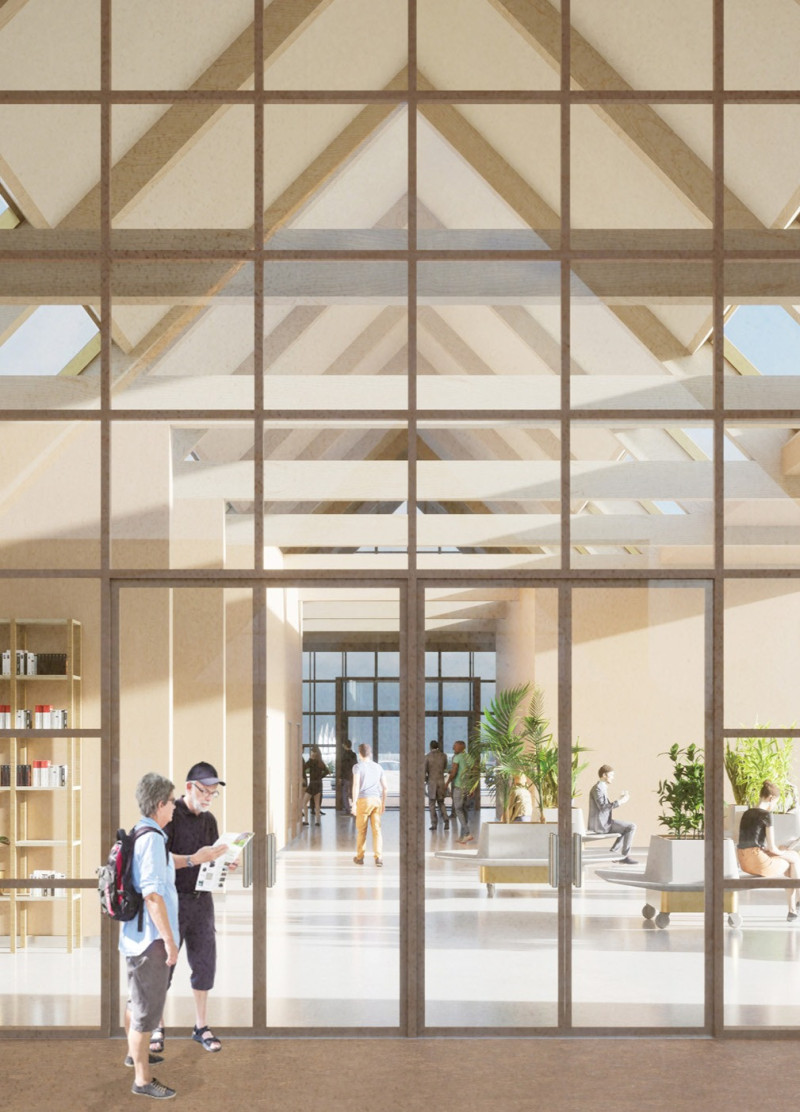5 key facts about this project
At its core, the project aims to serve as a multifunctional hub, accommodating diverse activities that foster community engagement. It incorporates various spaces designed for both individual use and collaborative interaction, reflecting the increasing demand for adaptable environments in today's architectural discourse. The arrangement of spaces has been carefully considered; open areas promote social interaction, while private zones allow for focused activity, demonstrating an understanding of human behavior and the dynamics of communal spaces.
The unique design approaches utilized in this project are evident in its materiality and structural choices. A selection of durable, eco-friendly materials has been made to not only enhance the aesthetic quality of the building but to also ensure longevity and sustainability. Materials such as reinforced concrete, glass, wood, and steel have been employed to create a visual cohesion that is both modern and timeless. The thoughtful use of glass facilitates natural light penetration, minimizing the need for artificial lighting during the day and creating a sense of connection with the outdoors. This characteristic enhances the occupants' experience, allowing them to feel a part of their surroundings rather than removed from them.
The facade of the building presents a dynamic interplay between solid and transparent elements. Lattice-like structures or solar shading devices might be integrated to reduce heat gain while adding a layer of texture to the building's exterior. This approach not only contributes to energy efficiency but also introduces an artistic element to the design, reinforcing the notion that functional architecture can also serve an aesthetic purpose. The strategic positioning of windows and outdoor sitting areas invites occupants to engage with the surrounding environment, offering views that interact with the various seasonal changes in the landscape.
Landscaping plays an integral role in the overall design, extending the building's footprint into the natural environment surrounding it. Native plant selections can enhance biodiversity while requiring less maintenance and irrigation, aligning with sustainable practices. The careful consideration of hardscape and softscape elements creates transitions between built and natural environments, offering additional recreational spaces for the community.
The site selection is another crucial aspect that anchors this project within its geographical context. The designers have taken advantage of the natural terrain, slopes, and existing foliage, ensuring that the building not only respects but also enhances its surroundings. This sensitivity to context exemplifies the project's deep-rooted connection to its location, allowing it to blend harmoniously with its environment while fulfilling its functional promises.
Further exploration of the architectural plans, sections, and designs would provide keen insights into the spatial configurations and the rationale behind the design decisions made by the architects. The meticulous documentation of these elements captures how this project stands as a testament to thoughtful architectural practice that harmonizes form and function in a cohesive manner.
To fully appreciate the nuances of this architectural project, interested readers are encouraged to delve deeper into its presentation, examining the various architectural ideas, plans, and sections that illustrate the depth and rigor of the design process. Each element contributes to a comprehensive understanding of how architecture can serve to enhance community interaction while remaining respectful of environmental and contextual factors.


 Xenia Angela Sooniste
Xenia Angela Sooniste 




















